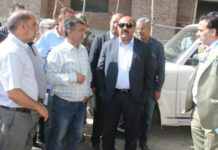The Atal Tunnel that will bypass Rohtang pass will ensure year-round connectivity to Ladakh at a time we need it more than ever
The Chinese misadventure in Ladakh over the summer deeply disappointed a class of people who view a driving or riding trip to Ladakh as an essential step to manhood. They thought that if the Chinese were successful in their ingress and held on to their newly-acquired positions, summer road trips would never be the same again. Thanks to a ferocious counter by the Indian Army, not only can we still keep our summer tryst with Ladakh but now with the inauguration of the new Atal Tunnel, built between Manali and Leh, we can access Ladakh by road all-year-round. The nine-kilometre tunnel will reduce 46 km between Manali and Leh and since motorists will not have to go through the daunting Rohtang Pass anymore, they will save an incredible five hours and not worry about the route being snow-bound or how to avoid rockfalls. However, for full all-weather connectivity, additional tunnels need to be built on the Manali-Leh route as the high passes — Baralacha pass (16,040 feet), Lachung La pass (16,800 feet) and Tanglang La pass (17,480 feet) — on the axis will impede movement during heavy winter snow.
The story of the longest highway tunnel in the world at 3,000 metres, envisioned by Atal Bihari Vajpayee after Pakistan’s sneaky attempt to cross the border in Kargil in the summer of 1999, was a long and tedious one. Building a tunnel at Rohtang became necessary after the Kargil conflict as Pakistan tried to break the link between Kashmir and Ladakh by disrupting activity on the Srinagar-Leh road. Given its geographic positioning close to the Line of Control (LoC), this road is exposed to Pakistani firing. The Manali-Leh link could then become a secondary conduit for our forces in Ladakh and our supply line to frontline garrisons would be uninterrupted. The tunnel’s foundation stone was laid by United Progressive Alliance (UPA) Chairperson Sonia Gandhi on June 28, 2010, in the Solang Valley near Manali, some 570 km from the national capital. Even though construction started in 2010, a combination of geological challenges, particularly tectonic faults in the Himalayas, as well as a lack of political will to push construction, led to inordinate delays. That ennui has changed after this summer’s attempts by China to unilaterally change the status quo in eastern Ladakh. The opening of this tunnel will ensure that both troops and supplies can make it to the border much faster and will not have to depend on tenuous air supply lines of the snow-bound Rohtang Pass route in winter. It will also be a big boost to locals and the tourism sector. There are a number of technical firsts in this project. The horseshoe-shaped, single-tube, double lane tunnel with a roadway is an adaptation of the latest Austrian tunnelling method for construction. Taming the glacial-fed Seri rivulet inside the tunnel was one of the biggest challenges for the engineers. It has been designed to carry a traffic density of 3,000 cars and 1,500 trucks per day. And each can travel at a maximum speed of 80 km per hour. In case of an emergency, which may leave the main tunnel unusable, it has an overhead clearance of 5.525 metres. A fire-proof emergency egress tunnel has been built into the main tunnel itself. It is fully ride-safe with telephones every 50 metres, emergency exits every 500 metres and air quality monitoring every 1 km. Also, an automatic incident detection system with CCTV cameras has been installed every 250 metres.This is a great example of engineering as it is the world’s longest highway tunnel above 10,000 ft but we need hundreds more of these projects if we are to really stand up and compete with China. Not just militarily but also economically. If India is to become a manufacturing and production hub, such projects are essential for faster movements and seamless connectivity.





























